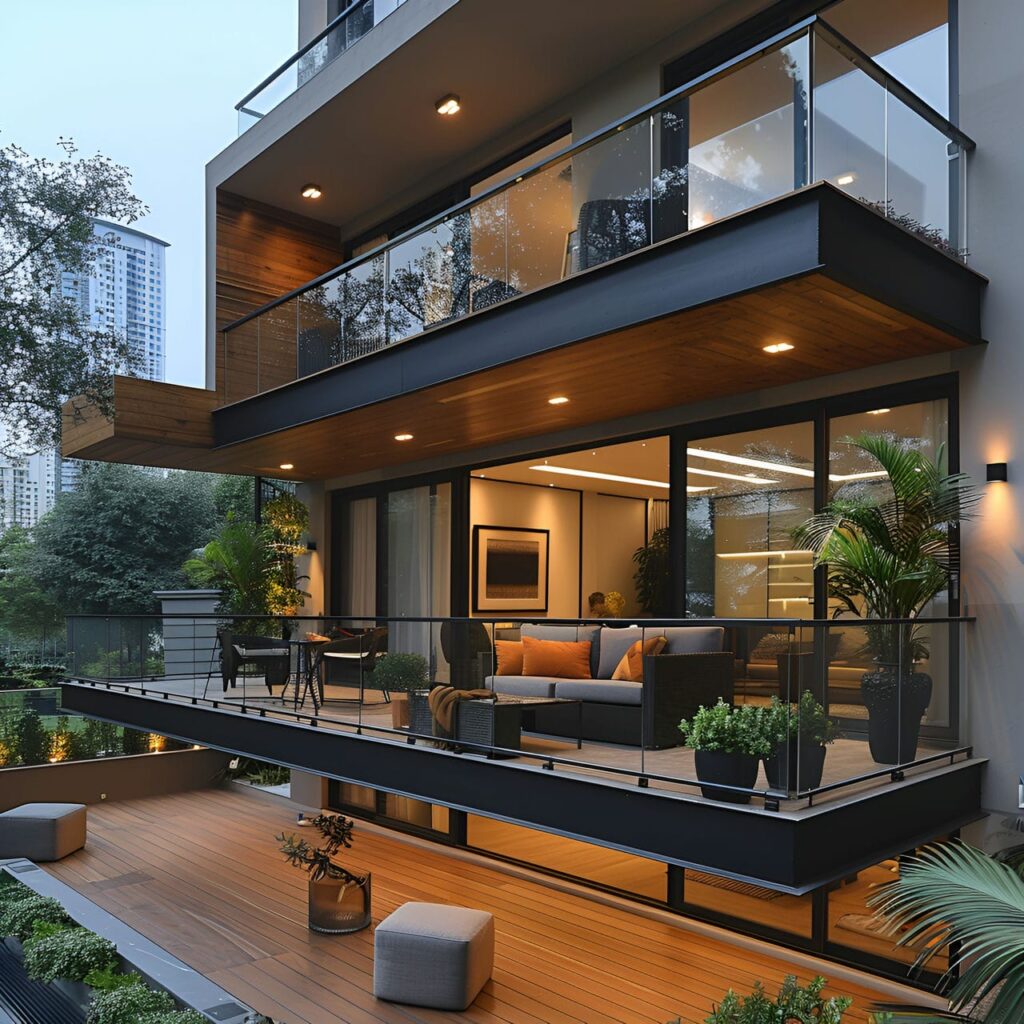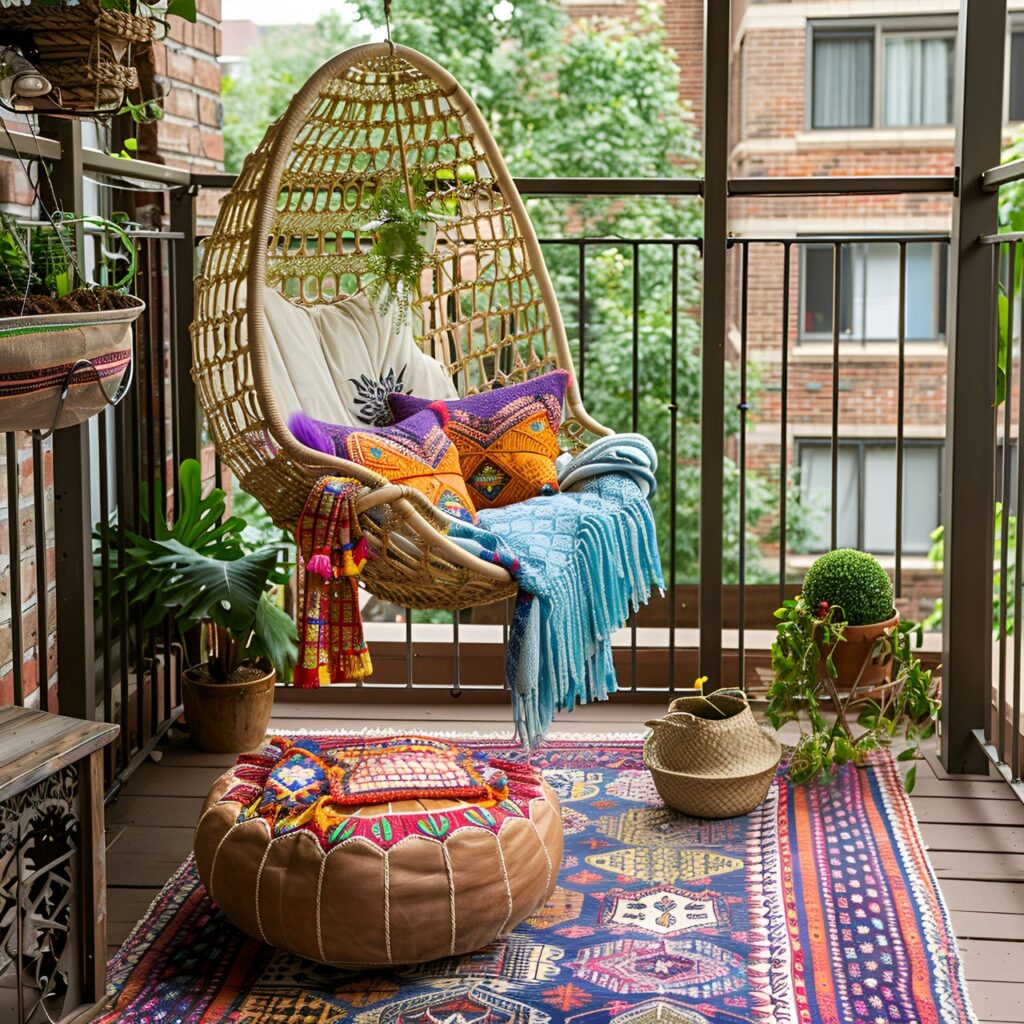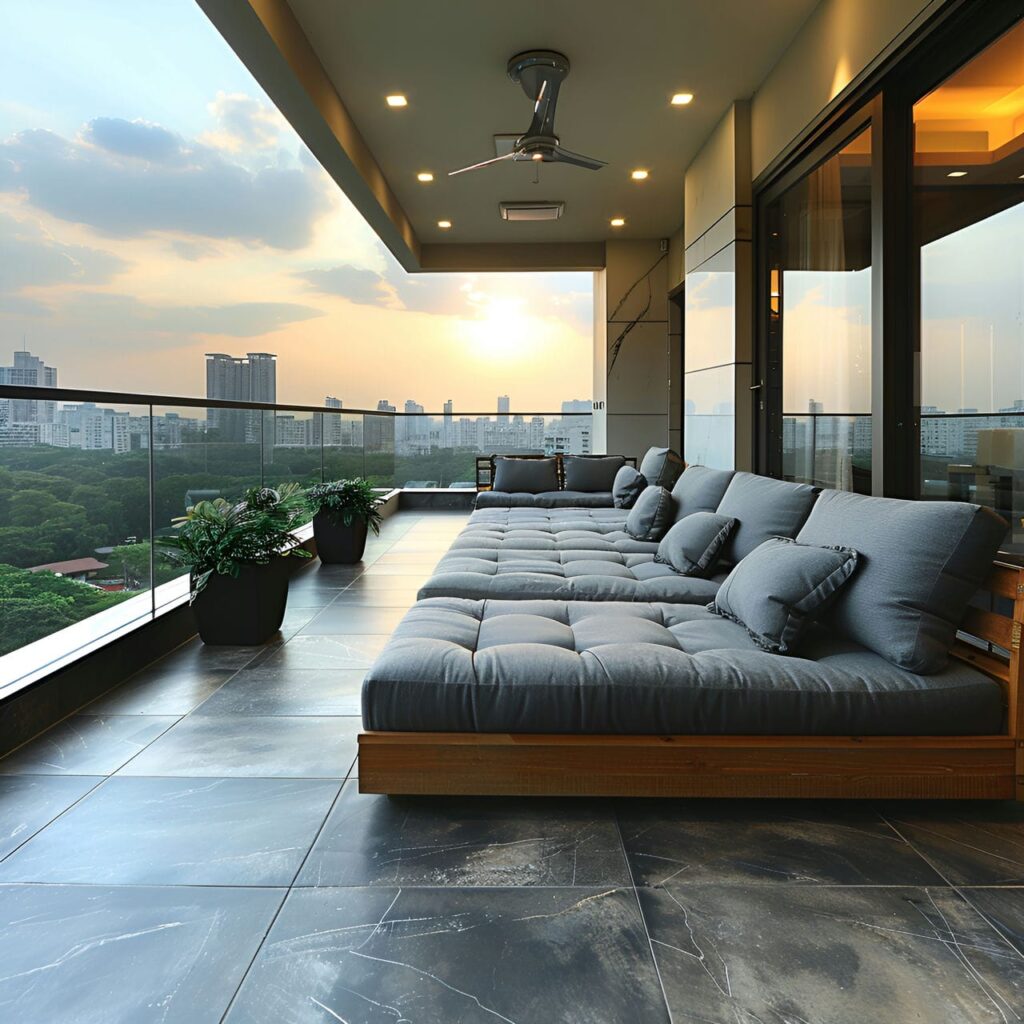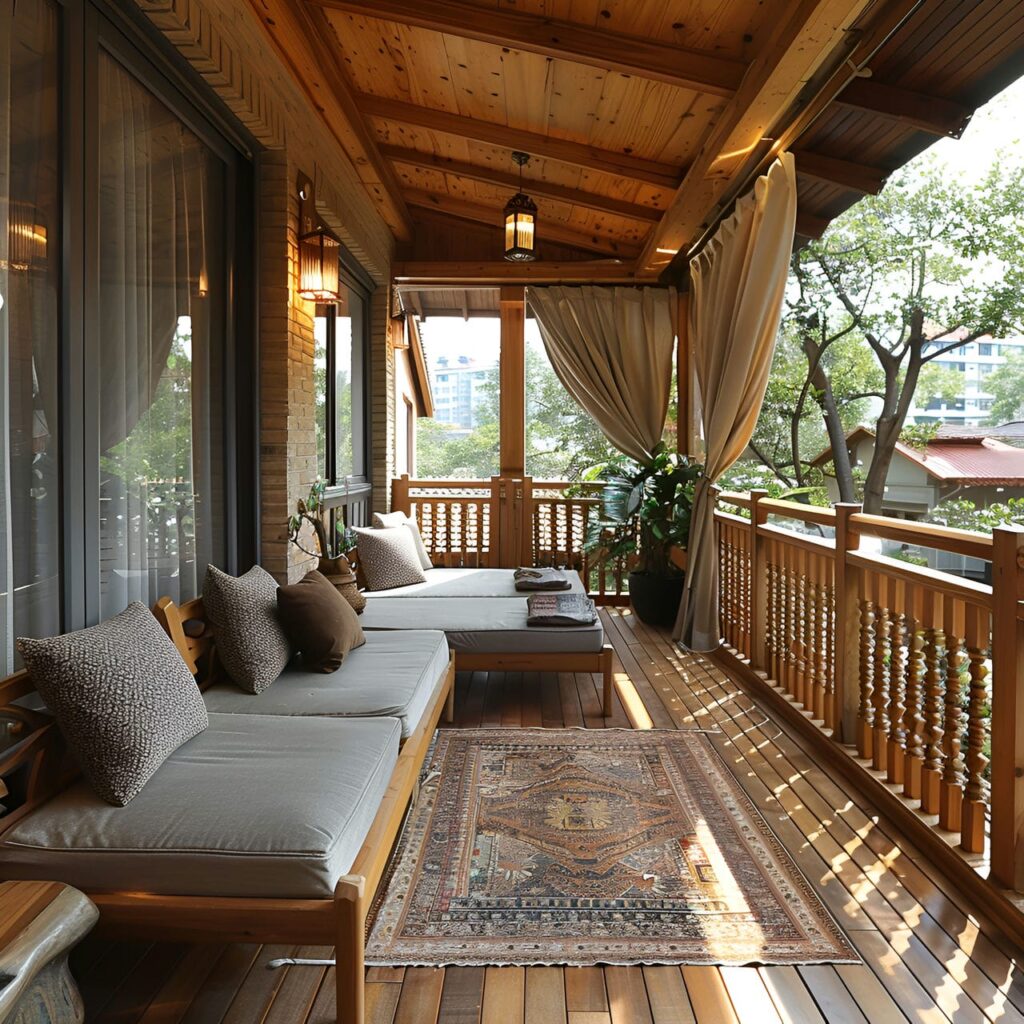A balcony is a platform that extends from the wall of a building, usually on an upper floor. It is supported by columns or brackets and enclosed by a railing or a balustrade. A balcony can provide various benefits, such as enhancing the appearance of a building, increasing the living space, and offering a view of the surroundings. The size of a balcony can vary depending on the design and the structure’s purpose. The typical size of a balcony is 5 feet to 8 feet in width (1.5 meters to 2.5 meters) and 10 feet to 16 feet in length (3 meters to 5 meters). A balcony of this size can comfortably fit two to four people, depending on the furniture arrangement and the desired comfort level. It provides a cozy outdoor space where individuals can enjoy fresh air and a view of their surroundings. The size of the balcony also allows for the placement of potted plants or other decorative elements to enhance the ambiance. The functionality of a balcony depends on how the owner or the occupant uses it. Some people use their balconies as an extension of their living rooms, where they can relax, entertain guests, or enjoy the fresh air, while others use their balconies to grow plants, flowers, or herbs, creating a green oasis in the urban environment. Some people use their balconies as a storage area, where they can keep items that are not frequently used, such as bicycles, tools, or seasonal decorations. The furniture and the renovation of a balcony can also vary depending on the preference and the budget of the owner or the occupant. Some people prefer to keep their balconies simple and minimal, with only a few chairs and a table, while others like to decorate their balconies with cushions, rugs, lamps, or artwork, making them cozy and inviting. Some people choose to renovate their balconies by adding features such as awnings, screens, or glass panels, to protect them from the weather, the noise, or the insects.
What is the typical size of a balcony?
The typical size of a balcony is 5 feet to 8 feet in width (1.5 meters to 2.5 meters) and 10 feet to 16 feet in length (3 meters to 5 meters). A balcony of this size can comfortably fit two to four people, depending on the furniture arrangement and the desired comfort level. It provides a cozy outdoor space where individuals can enjoy fresh air and a view of their surroundings. The size of the balcony also allows for the placement of potted plants or other decorative elements to enhance the ambiance. The dimensions of a balcony are essential in determining its functionality and the activities it can accommodate. A standard-sized balcony provides enough space for a couple of chairs and a small table, allowing residents to relax and enjoy the outdoor environment. It is important to note that larger balconies can offer more flexibility regarding furniture arrangement and possible uses, while smaller balconies may have limited space for additional seating or activities.
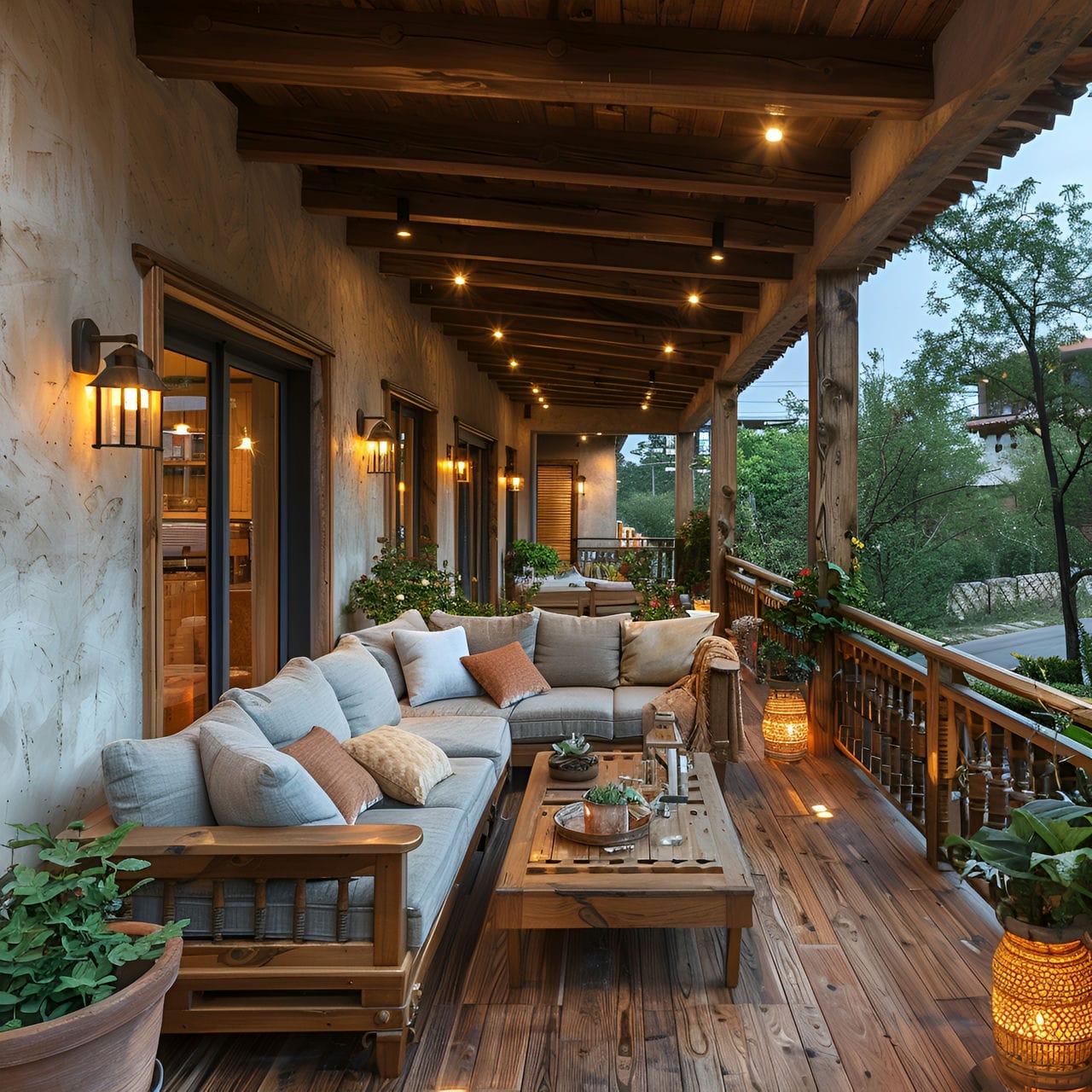
What is the use and purpose of a balcony?
The use and purpose of a balcony offer a recreational space for relaxation and enjoying the outdoors without leaving the comfort of one’s home. Firstly, a balcony is commonly used as a recreational area. It provides a place to relax and unwind, allowing individuals to enjoy a change of scenery without leaving their homes. People can set up chairs, tables, or loungers on the balcony to create a comfortable outdoor seating area. This space can be used for reading, coffee, or enjoying the view. Secondly, a balcony offers an opportunity for outdoor living. It allows residents to experience a connection with nature while still being within the confines of their homes. People can decorate their balconies with plants, flowers, and other greenery, creating a mini-garden or a space for urban farming. It enables individuals to engage in gardening activities, fostering a sense of relaxation and fulfillment. Lastly, a balcony provides additional space for storage or utility purposes. It can be a storage area for outdoor equipment, such as bicycles or gardening tools. Some balconies are designed with built-in cabinets or shelves, providing convenient storage solutions for residents. Balconies offer a place for drying clothes or airing out items that require fresh air.
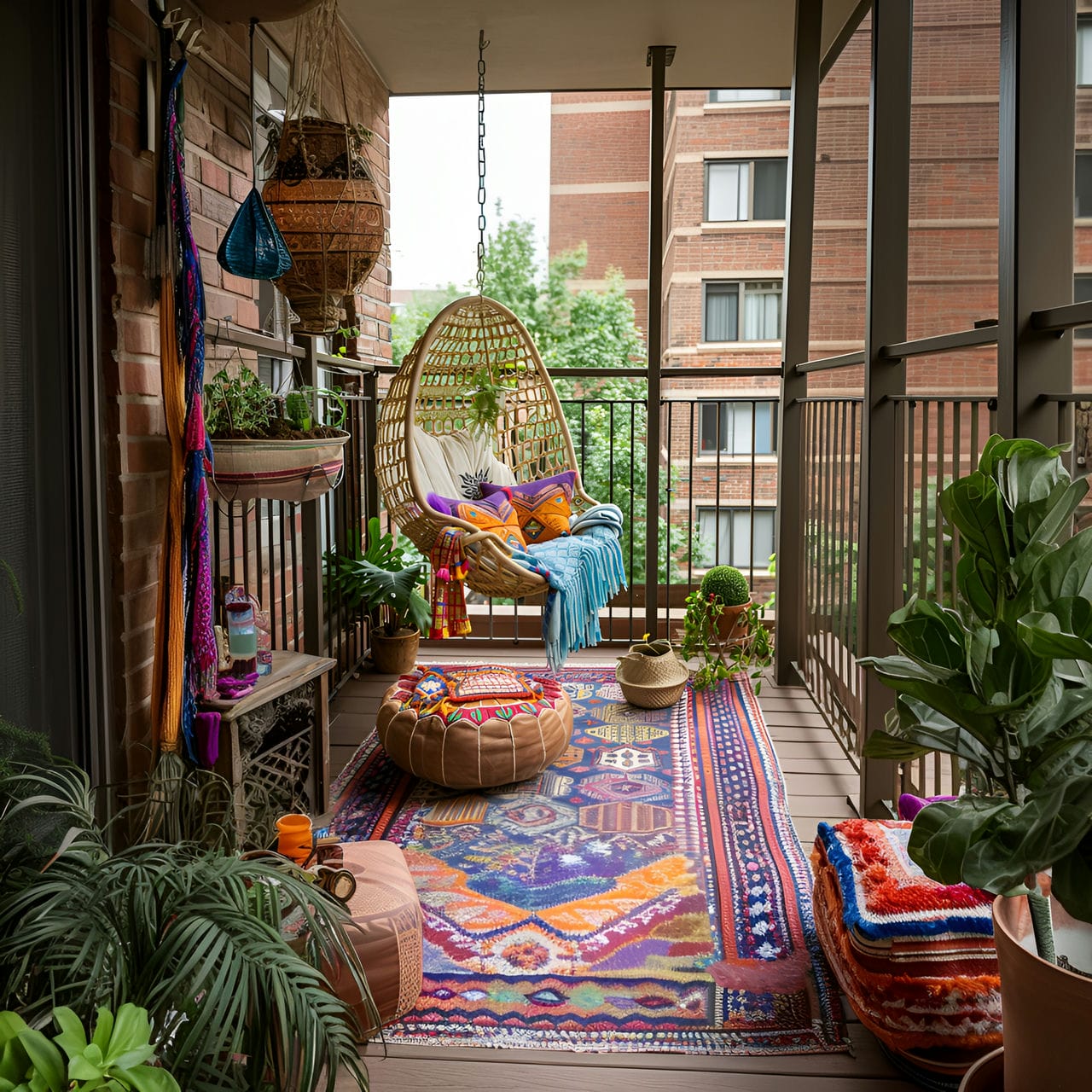
What is the typical shape of a balcony?
The typical shape of a balcony is rectangular or square. Rectangular balconies have longer sides and shorter ends, forming a shape similar to a stretched-out rectangle. This shape allows for a more extended area along one side, accommodating furniture or providing a larger space for movement. Square balconies, on the other hand, have equal sides, forming a perfect square shape. This shape offers a balanced and symmetrical design, providing a compact and versatile space. The rectangular and square shapes of balconies are popular because they can be easily integrated into the layout of a building. These shapes allow for multiple access points, making it convenient for individuals to enter or exit the balcony. The straight lines and right angles of rectangular and square balconies harmonize well with the overall architectural design of the building, creating a cohesive and visually appealing appearance.
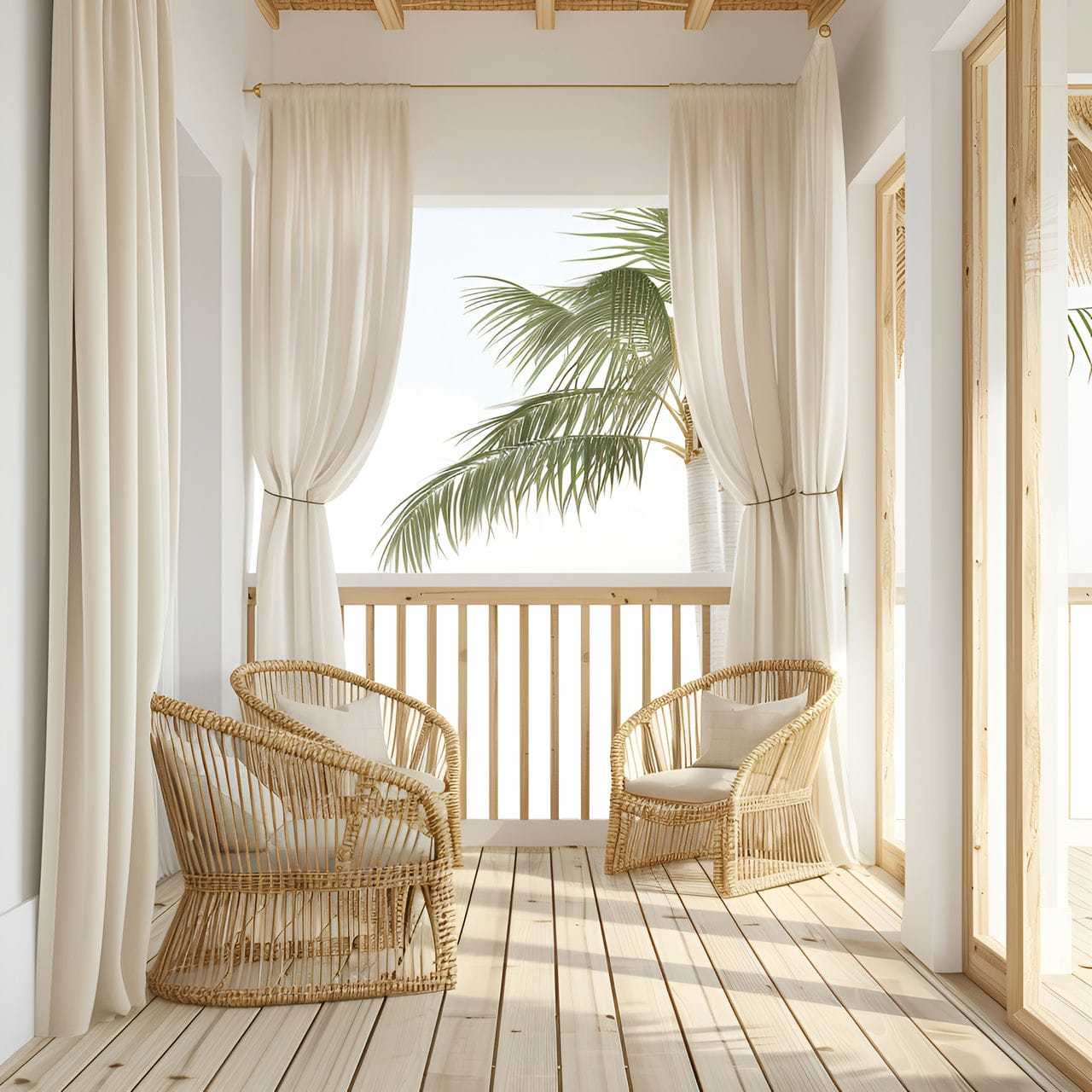
What furniture commonly equips a balcony?
Listed below are the types of furniture commonly equips a balcony:
- Sofa: A sofa is a popular choice for larger balconies as it provides comfortable seating for multiple people. It offers a cozy and inviting atmosphere, making the balcony feel like an extension of the indoor living space.
- Bistro Set: A bistro set typically consists of a small table and two chairs, perfectly suited for smaller balconies. It is a compact and stylish option that allows individuals to enjoy meals or a cup of coffee while maximizing the available space.
- Hammock: Hammocks are a relaxing addition to balconies, offering a suspended seating option. They provide a unique and leisurely experience, allowing individuals to sway gently while enjoying the outdoor environment.
- Bar Cart: A bar cart is a versatile piece of furniture that can be used to store and display beverages, glassware, and other entertaining essentials. It adds a touch of elegance and convenience, especially for those who enjoy hosting gatherings on their balconies.
- Storage Bench: A storage bench serves a dual purpose by providing seating and storage space. It is an excellent option for balconies with limited storage capacity, allowing individuals to keep items like cushions, blankets, or gardening tools neatly tucked away.
- Hanging Chair: Hanging chairs, also known as swing chairs or egg chairs, are a trendy and fun addition to balconies. They provide a relaxing and cozy seating option, allowing individuals to swing gently while enjoying the view or engaging in leisure activities.
- Folding Chairs: Folding chairs are practical for balconies with limited space or for individuals who prefer flexibility. They can be easily folded and stored when not in use, making them convenient for occasional seating needs or when extra guests arrive.
- Ottoman: An ottoman is a versatile piece of furniture used as a footrest, extra seating, or a small table paired with a tray. It adds versatility and comfort to the balcony seating arrangement.
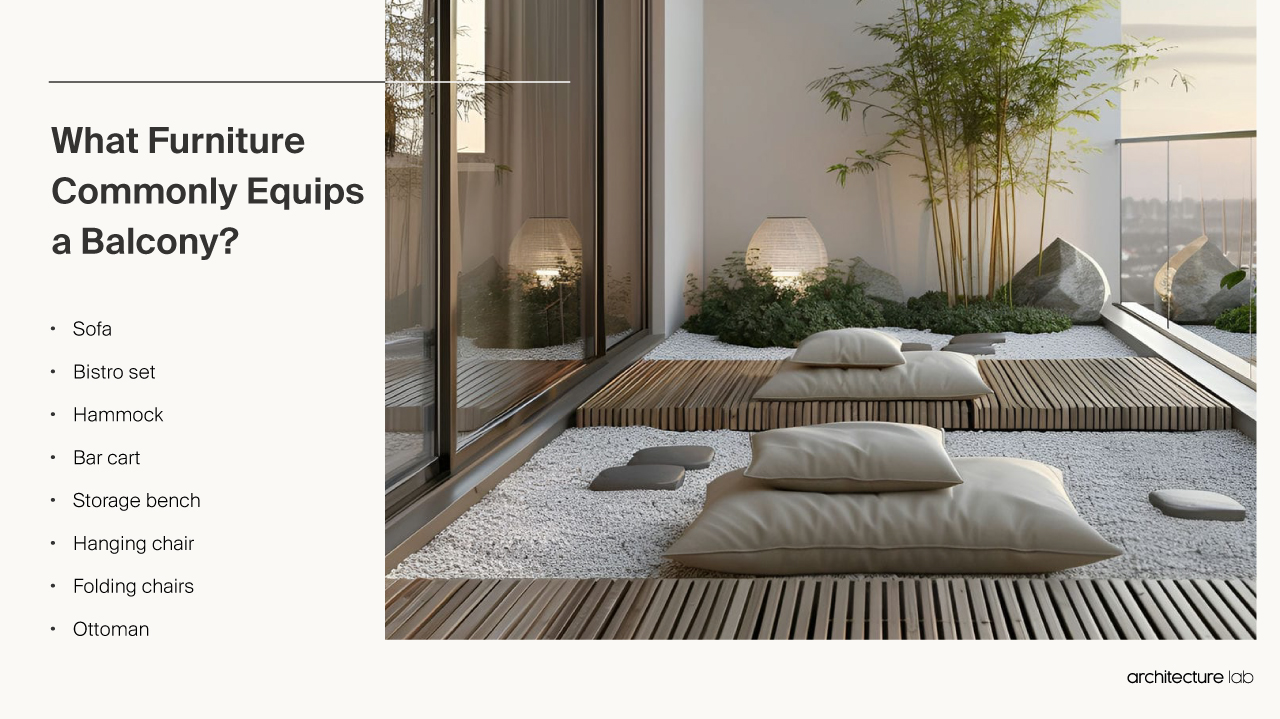
What is the normal ceiling height of a balcony?
The typical ceiling height of a balcony is 8 feet (2.4 meters). A ceiling height of 8 feet (2.4 meters) allows for the installation of lighting fixtures and ceiling fans, if desired, without compromising the headroom. It also provides ample vertical space for hanging plants or other decorative elements from the ceiling. This height allows for placing taller furniture pieces, such as high-back chairs or tall planters, without creating a cramped or claustrophobic atmosphere. The standard ceiling height of 8 feet (2.4 meters) balances functionality and aesthetics. It provides enough room for individuals to enjoy the balcony comfortably while maintaining a visually pleasing proportion with the overall dimensions of the space.
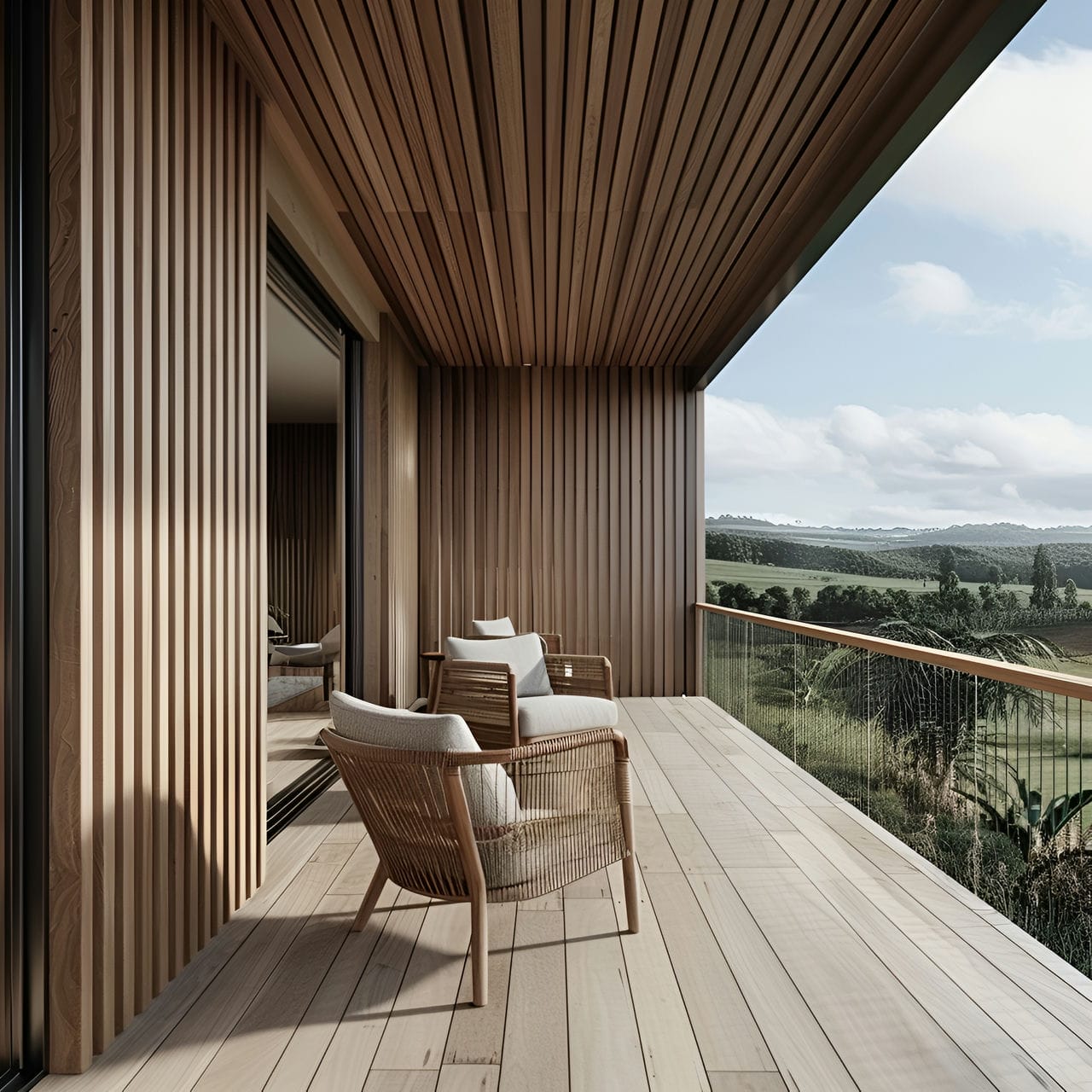
What colors are balconies usually painted?
Listed below are the paint colors usually used in balconies:
- White: White is a popular color choice for balconies, creating a clean, fresh, and timeless look. It also helps reflect light, making the space feel brighter and more spacious.
- Neutral Tones: Neutral colors such as beige, gray, or taupe are commonly used on balcony walls. These colors provide a versatile backdrop that complements various furniture styles and allows easy coordination with different decor elements.
- Pastel Shades: Soft pastel colors like light blue, pale green, or blush pink are often chosen to create a serene and calming ambiance on balconies. These gentle hues evoke a sense of relaxation and can contribute to a relaxing outdoor atmosphere.
- Earthy Tones: Earthy colors like brown, terracotta, or olive green are popular for balconies as they connect the indoor space with the natural surroundings. These warm tones can create a cozy and inviting atmosphere, especially when combined with wooden furniture or natural textures.
- Accent Colors: Lively accent colors are sometimes used to add pops of interest and visual appeal to balconies. These accent colors can be incorporated through accessories like cushions, rugs, or artwork to infuse personality and create focal points within the space.
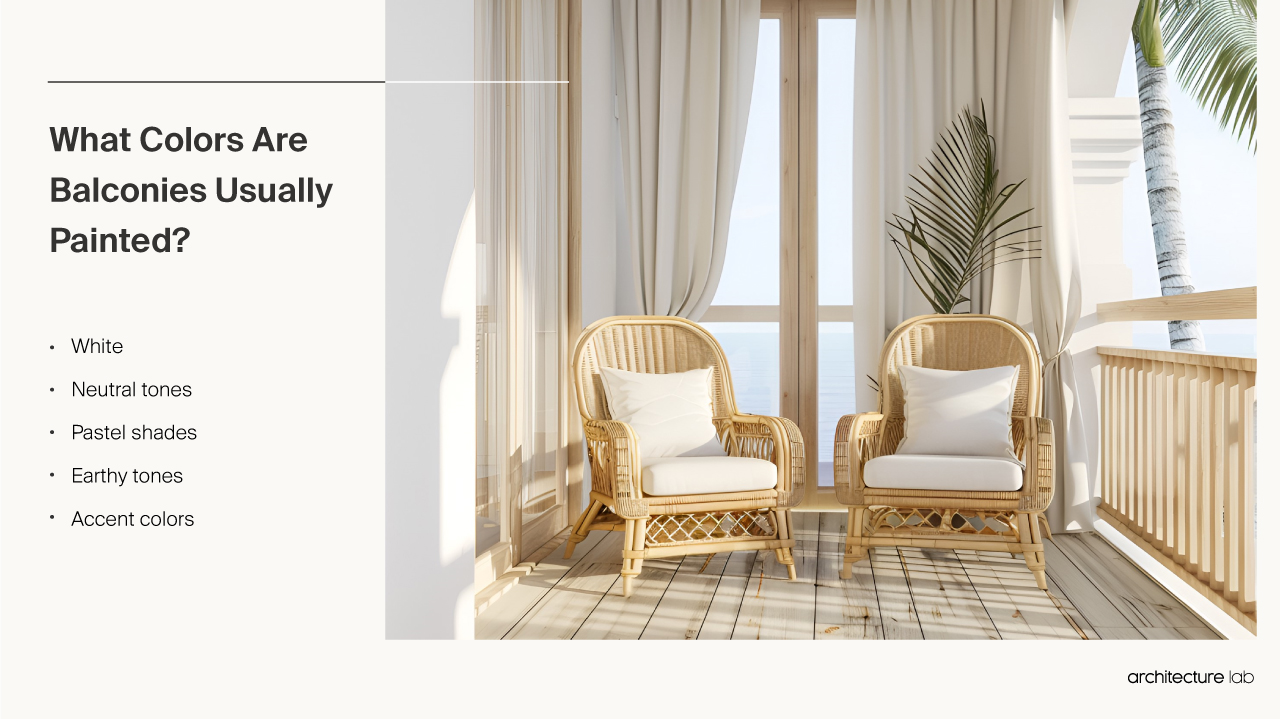
What makes the balcony functional?
The balcony is functional through additional outdoor space for residents to enjoy, enhances the aesthetic appeal of the building, and offers practical benefits such as improved ventilation and natural lighting. Firstly, a balcony provides additional outdoor space for residents or occupants. It serves as an extension of the living area, allowing individuals to step outside and experience a change of environment without leaving the comfort of their home. This extra space can be utilized for various activities like relaxing, socializing, or gardening. People can set up chairs or tables on the balcony, creating a cozy spot to unwind or entertain guests. Secondly, a balcony enhances the aesthetic appeal of a building. It adds visual interest and breaks up the monotony of a flat exterior surface. This architectural feature creates a sense of depth and dimension, making the building more visually appealing. Balconies can be designed with different materials, textures, and styles, adding character and beauty to the overall design. Lastly, from a safety perspective, balconies play a crucial role. They provide an elevated vantage point, allowing residents to observe their surroundings and monitor potential risks or emergencies. In a fire or other hazardous situations, a balcony can serve as an escape route or a refuge until help arrives.
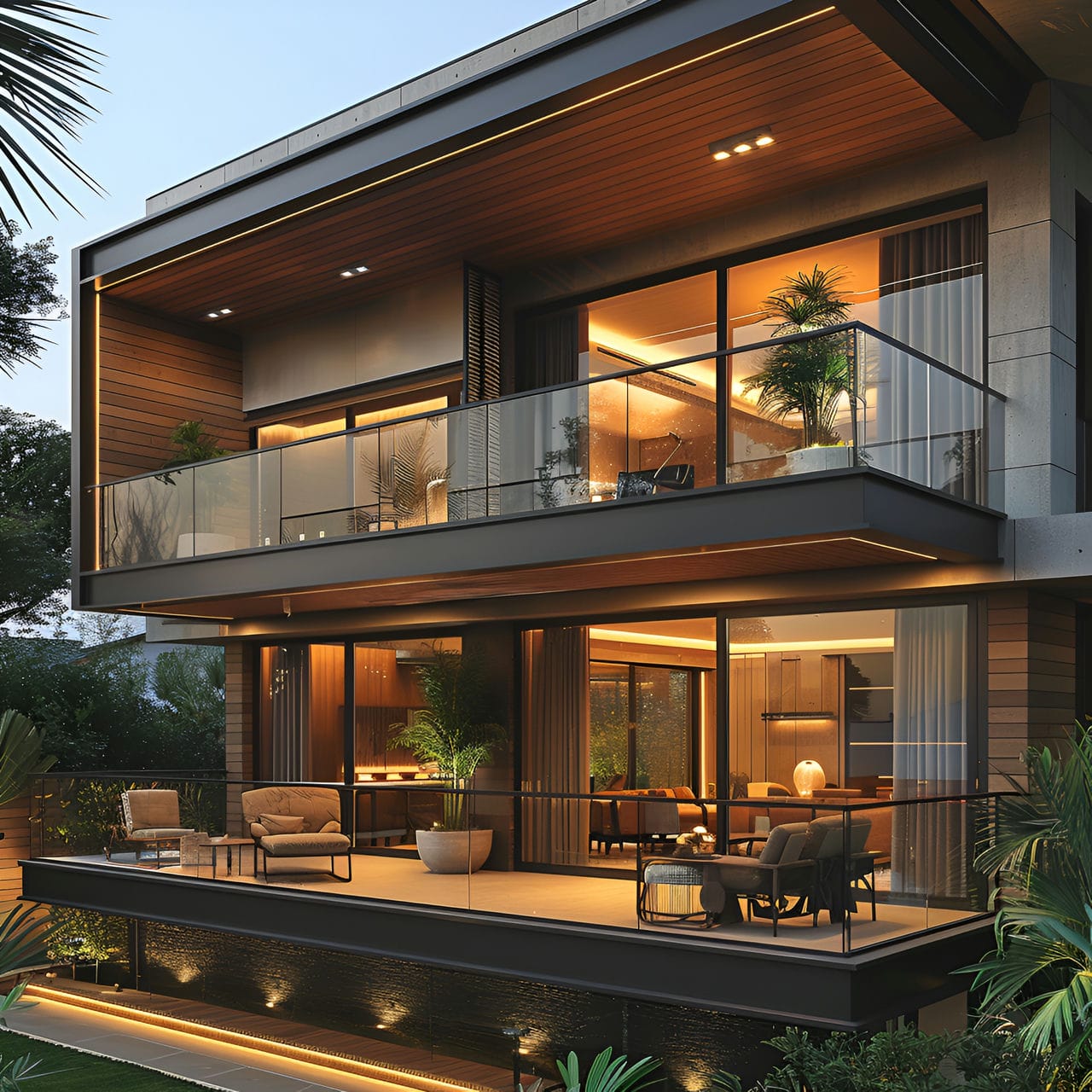
How is energy efficiency achieved on a balcony?
Energy efficiency is achieved in a balcony by installing energy-efficient windows, proper insulation, using greenhouse energy-efficient lighting, controlling natural light and ventilation, and avoiding energy wastage are key strategies. Firstly, by installing energy-efficient windows. These windows are designed to minimize heat transfer, keeping the interior cool during hot weather and warm during cold weather. Energy-efficient windows can reduce energy consumption by up to 15%. They typically have double or triple glazing, low-emissivity coatings, and insulating frames. Secondly, proper insulation is crucial for energy efficiency in a balcony. Insulating materials, such as fiberglass or foam insulation, can be installed in the walls, ceiling, and floor to prevent heat loss or gain. This helps maintain a comfortable temperature inside the balcony area and reduces the need for heating or cooling devices. Insulating the balcony can result in energy savings of $23 (€20.93, £20.01) per year. Thirdly, using energy-efficient lighting can contribute to energy efficiency in a balcony. LED (light-emitting diode) bulbs are highly efficient and consume significantly less energy than traditional incandescent bulbs. LED bulbs also have a longer lifespan, reducing the need for frequent replacements. Fourthly, controlling natural light and ventilation can improve energy efficiency. One can regulate the sunlight entering the balcony, reducing the need for artificial lighting. Proper ventilation can help maintain a comfortable temperature without relying heavily on air conditioning. Lastly, it is essential to avoid energy wastage by turning off appliances and electronics when not in use. Most devices continue to consume energy even in standby mode. One can completely cut off the power supply to these devices, saving energy and reducing electricity bills. When leaving the balcony, simple habits like turning off lights, fans, and electronics can significantly impact energy efficiency.
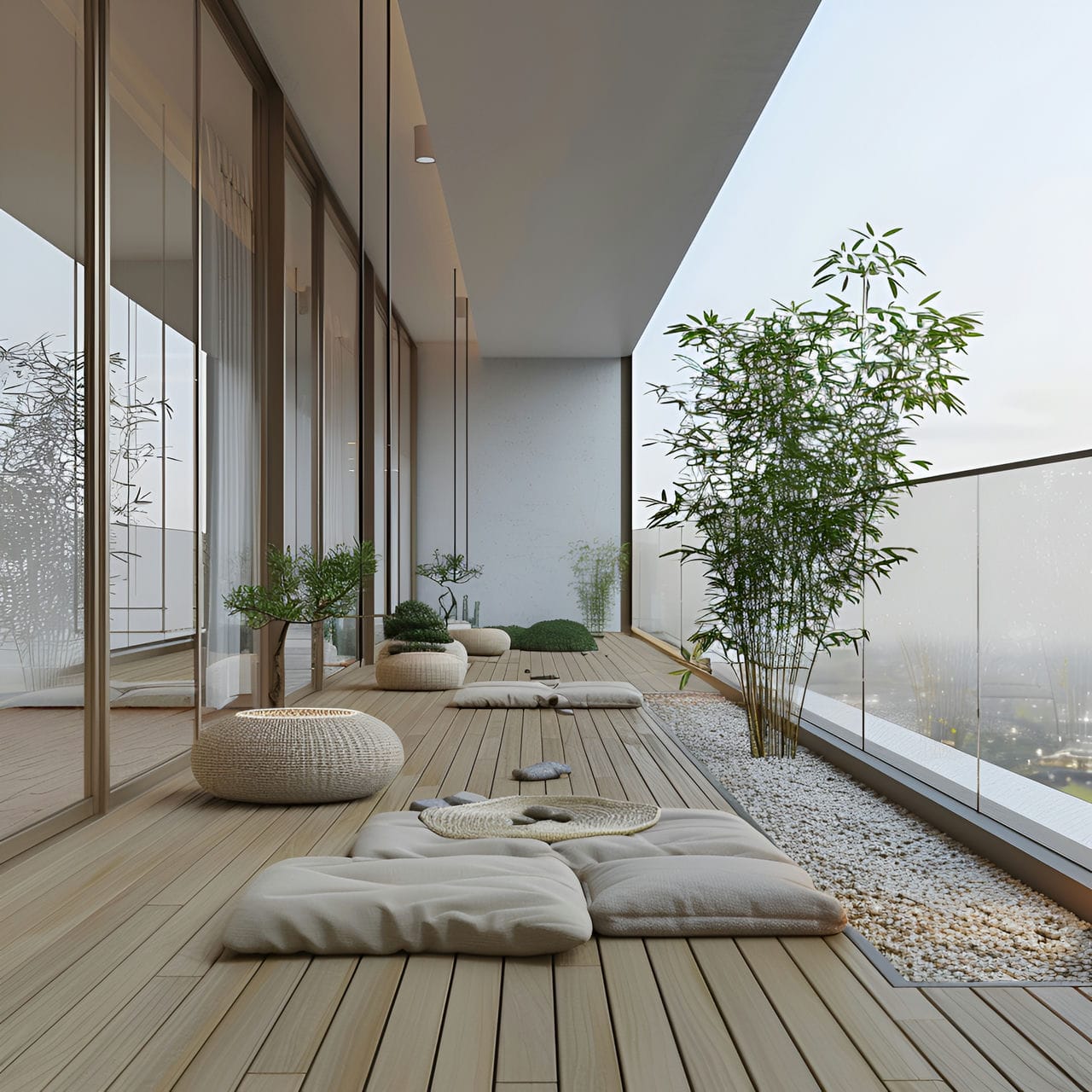
How much does it typically cost to renovate a balcony?
It typically costs $1,000 (€910, £870) to $10,000 (€9,100, £8,700) or more to renovate a balcony. For a basic balcony renovation, which may include cleaning, painting, and minor repairs, the cost can be $1,000 (€910, £870) to $3,000 (€2,730, £2,610). This typically covers the cost of labor, materials such as paint, primer, and cleaning supplies, and any minor repairs required. The cost can increase significantly if the renovation involves more significant changes, such as replacing flooring, adding new railings, or installing additional features like a pergola or outdoor seating. The cost can range from $5,000 (€4,550, £4,350) to $10,000 (€9,100, £8,700) or more in such cases.
What factors affect the balcony renovation?
Listed below are the factors that affect the balcony renovation:
- Size of the balcony: The size is a significant factor affecting the renovation cost. Larger balconies require more materials and labor, resulting in higher expenses.
- Materials used: The choice of materials for the balcony renovation can greatly impact the cost. High-quality materials such as hardwood or composite decking, metal railings, and durable waterproofing systems are more expensive than standard options.
- The renovation’s complexity: The balcony renovation project’s complexity influences the cost. Additional features like built-in seating, lighting, or intricate designs may require specialized labor and materials, increasing the overall expenses.
- Location of the property: The property’s location can affect the cost due to variations in labor and material prices. Balcony renovations in urban areas or regions with higher living costs are more expensive than in rural or lower-cost areas.
- Accessibility: The ease of access to the balcony can impact the renovation cost. If the balcony is difficult to reach or requires special equipment for transportation of materials, the expenses may rise.
- Structural condition: The condition of the balcony’s structure plays a role in the renovation cost. If significant repairs or reinforcement are needed to ensure safety and stability, it can add to the overall expenses.
- Permits and regulations: Local permits and regulations may impose additional costs for balcony renovations. It is essential to comply with building codes and obtain necessary permits, which may involve fees.
- Contractor selection: The choice of contractor can affect the cost as different contractors have varying rates. Experienced and reputable contractors may charge higher fees but offer quality workmanship when renovating balconies.
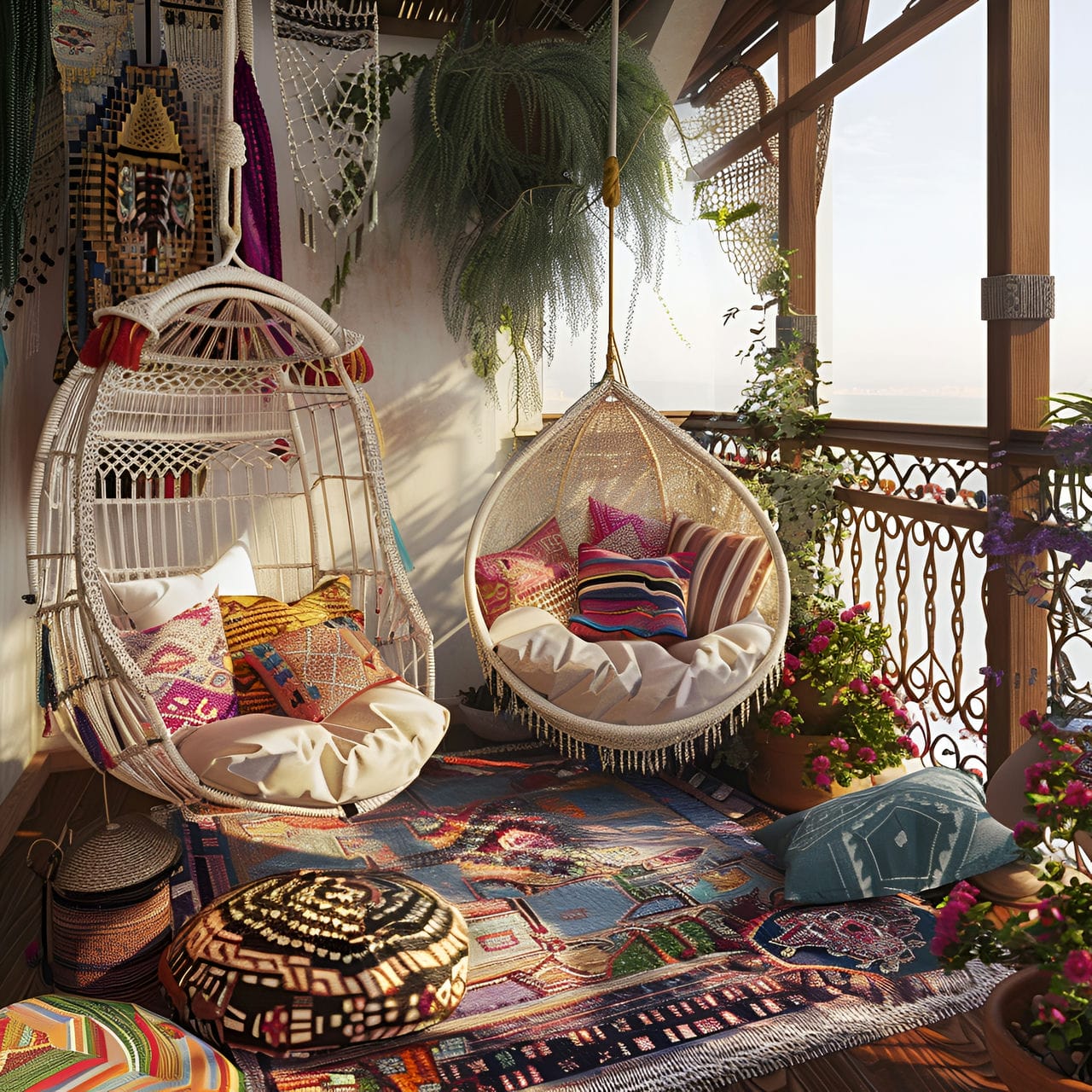
Is an architect required to renovate a balcony?
No, an architect is not required to renovate a balcony, but it is highly advised. An architect possesses the expertise and knowledge to create functional and aesthetically pleasing designs that maximize the potential of the balcony space. Hiring an architect ensures the renovation aligns with local building codes and regulations. They can navigate the permit process, ensuring all necessary approvals are obtained. This helps avoid costly mistakes and potential legal issues in the future.
How can an architect help you upgrade a balcony?
Listed below are the ways that an architect can help an owner upgrade a balcony:
- Customization: Architects can tailor the balcony upgrade to the specific needs and preferences of the owner, incorporating their design preferences and lifestyle requirements.
- Views and Privacy: Architects can strategically design the balcony to optimize views while ensuring privacy. They may suggest the placement of screens, plantings, or other elements to create a private and enjoyable outdoor space.
- Accessibility: Architects consider accessibility when upgrading a balcony, ensuring it is easily accessible for individuals with mobility challenges. They can incorporate features like ramps or widened doorways to accommodate wheelchair users.
- Environmental considerations: Architects can integrate sustainable design principles into the balcony upgrade. They may suggest energy-efficient lighting, rainwater harvesting systems, or greenery to improve air quality and enhance the overall environmental impact.
- Permitting and Codes: Architects are well-versed in local building codes and regulations. They can navigate the permitting process, ensuring the balcony upgrade complies with all legal requirements. This helps owners avoid potential fines or complications during the renovation.
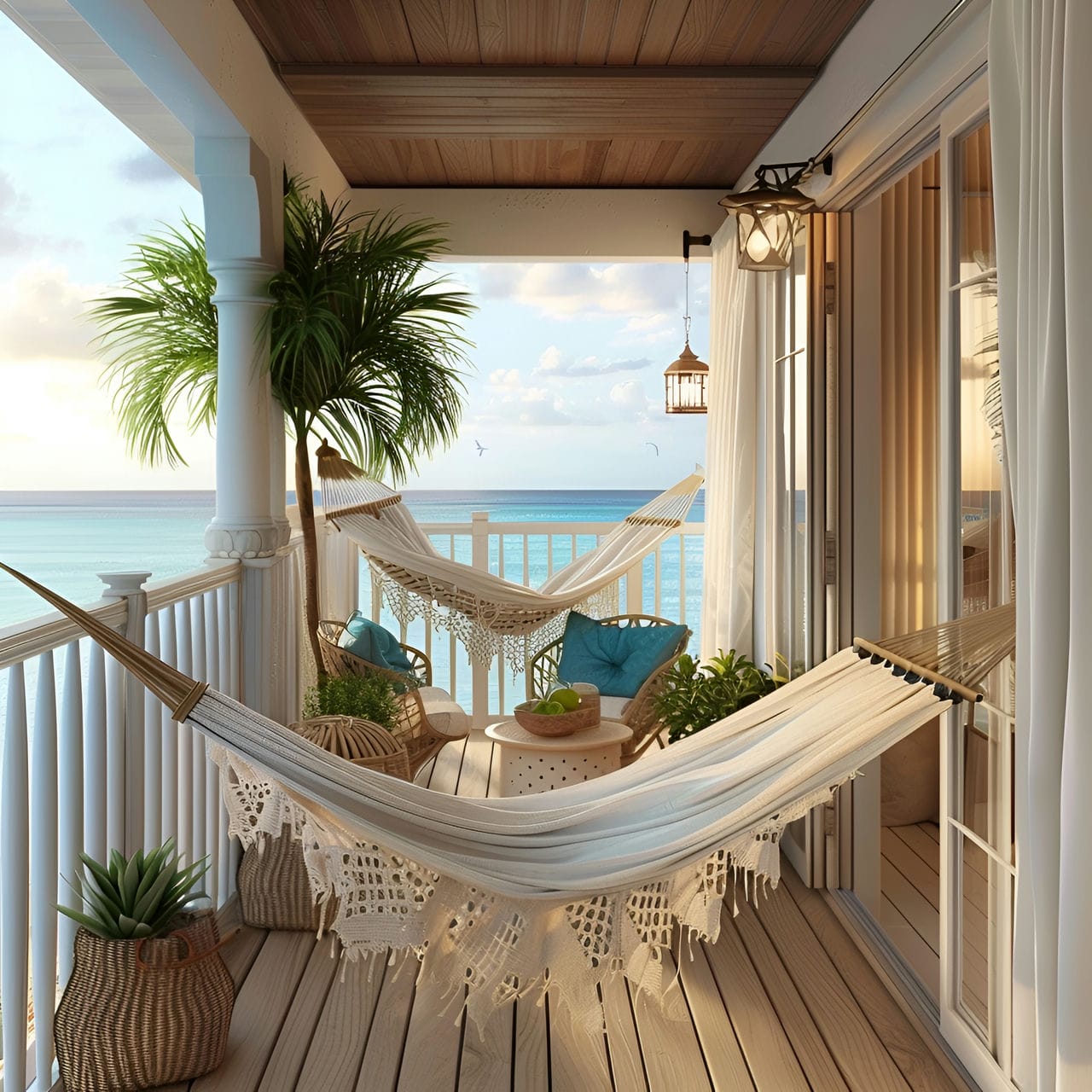
How much does it cost to hire an architect to renovate a balcony?
It costs $1,000 (€910, £870) to $5,000 (€4,550, £4,350) or more to hire an architect to renovate a balcony. For smaller-scale projects that involve basic design modifications or upgrades, the cost may be towards the lower end of the range, but larger and more complex renovations that require significant structural changes, custom designs, or extensive planning and coordination may fall on the higher end of the spectrum. Architectural fees are typically calculated as a percentage of the total project cost. The percentage can range from 5% to 20% or even higher, depending on the nature and scale of the renovation. This means that as the total project cost increases, the architect’s fees will also increase proportionally.
Is it worth it to hire an architect to upgrade a balcony?
Yes, it is worth it to hire an architect to upgrade a balcony. An architect brings valuable expertise and knowledge to the project, ensuring the upgrade is well-planned and executed. Their involvement can create a more functional and aesthetically pleasing balcony, enhancing the property’s overall value. Architects deeply understand structural design, materials, and building codes. They can assess the current condition of the balcony and propose appropriate upgrades that comply with safety regulations. This attention to detail reduces the risk of costly mistakes and ensures that the upgraded balcony meets the required standards. An architect’s creative input can significantly enhance the balcony’s design. They can develop innovative solutions tailored to the client’s needs and preferences.
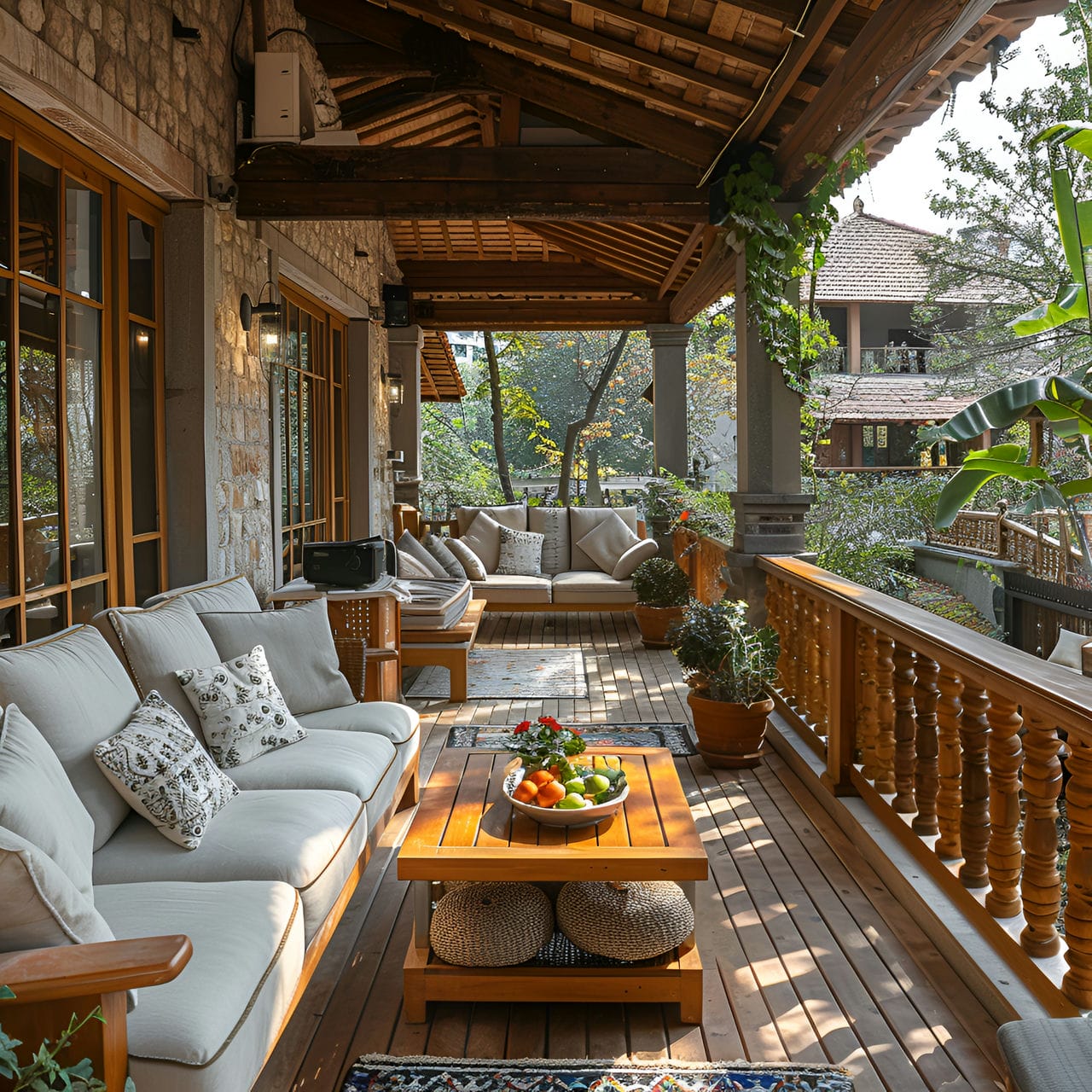
How long is needed to redecorate a balcony?
1 week to 2 weeks is needed to redecorate the balcony. The size and complexity of the balcony redecoration project significantly influence the time required. A smaller balcony with minimal changes, such as repainting and adding new furniture, can be completed relatively quickly, but larger balconies or those requiring structural modifications, such as installing new flooring or adding built-in features, will naturally take longer to complete. The availability of resources, including materials and labor, is crucial in determining the duration of redecoration of the balcony. If the necessary materials are readily accessible and the labor is readily available, the project can progress smoothly and efficiently; however, delays in material delivery or scheduling conflicts with contractors can extend the overall duration of the redecoration. Unforeseen challenges or complications during the project can also impact the duration. These can include issues with the existing balcony structure, unexpected repairs, or changes in design plans. Dealing with such unexpected circumstances may require additional resolution time, potentially extending the overall duration.
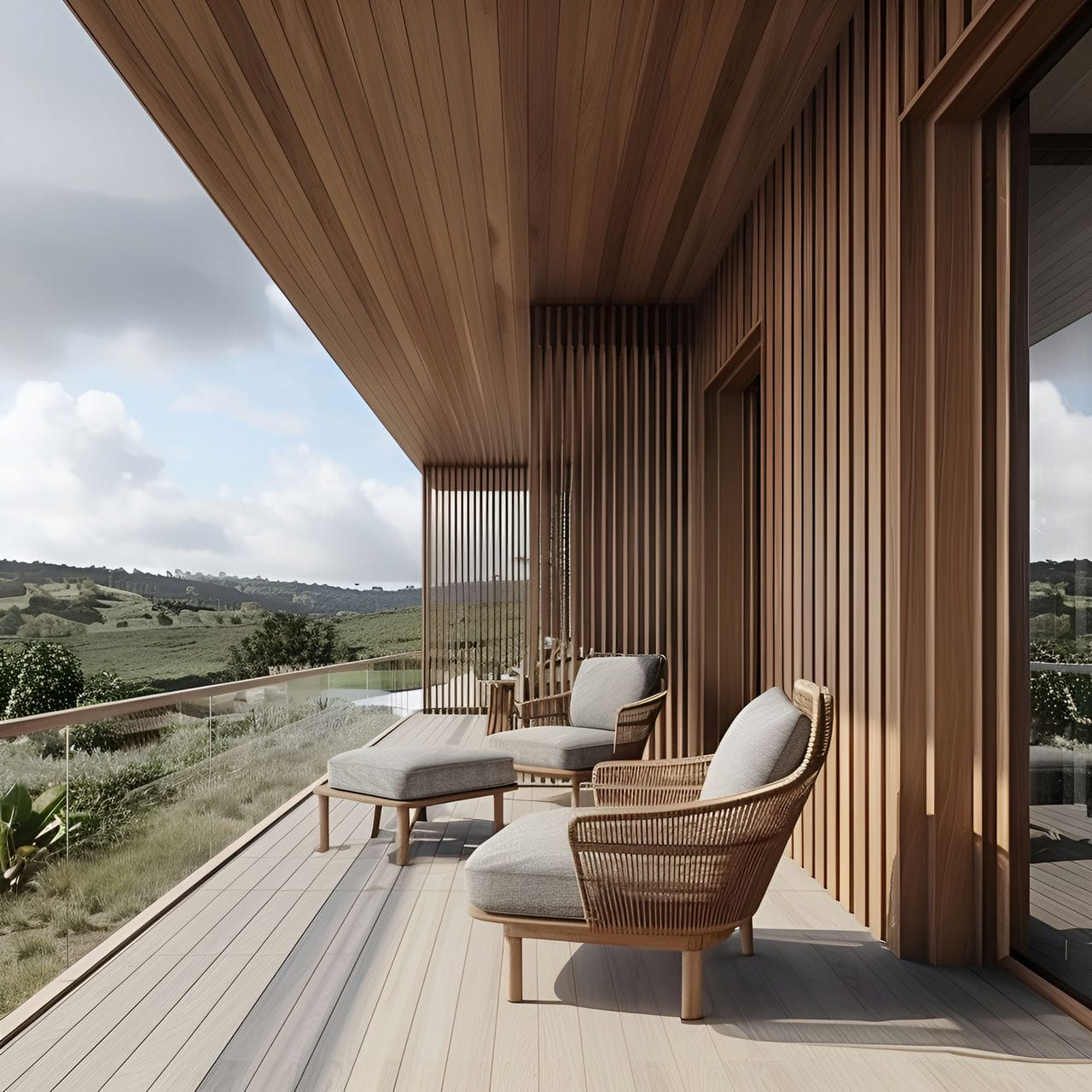
What are the struggles of the homeowner to redecorate a balcony?
Listed below are the struggles of the homeowner to redecorate a balcony:
- Limited budget: Homeowners may struggle with budget constraints when redecorating a balcony, as expenses can quickly increase. They must carefully plan and prioritize their spending to ensure they can afford the desired changes within their financial means.
- Lack of expertise: Redecorating a balcony requires knowledge and skill in design, construction, and material selection. Homeowners who lack experience in these areas may find it challenging to make informed decisions and may feel overwhelmed by the multitude of options available.
- Time constraints: Balcony redecoration can be time-consuming, especially for homeowners with busy schedules or other commitments. Finding the time to research, plan, shop for materials, and oversee the project can be a struggle, leading to delays or a prolonged process.
- Limited resources: Homeowners may face difficulties sourcing the necessary materials and finding reliable contractors or professionals to assist with the balcony redecoration. This can cause delays and frustration, particularly if the desired materials or services are not readily available in their area.
- Balancing personal preferences and functionality: It can be challenging to balance personal aesthetic preferences and the practical functionality of the balcony. When selecting materials and furniture, homeowners must consider weather resistance, durability, and maintenance requirements.
- Dealing with structural limitations: Some balconies may have structural limitations that pose challenges during redecoration. Homeowners may need to work around existing features, such as limited space, odd angles, or load-bearing considerations, which require creative problem-solving and potentially increase costs.
- Decision-making fatigue: The numerous choices in redecorating a balcony, such as color schemes, furniture styles, and decorative elements, can lead to decision fatigue. Homeowners may feel overwhelmed and find it difficult to make confident choices, causing delays or indecision.
- Managing contractor relationships: If homeowners decide to hire contractors or professionals for certain aspects of the redecoration, they may encounter challenges in managing these relationships. Communication issues, delays, and differing expectations can arise, requiring effective communication and balcony renovation project management skills.
